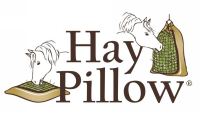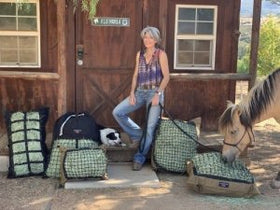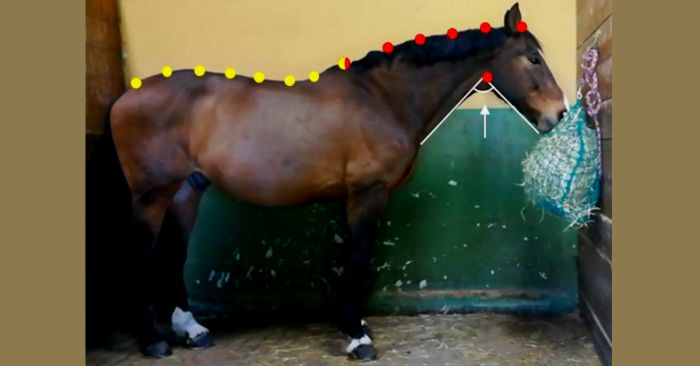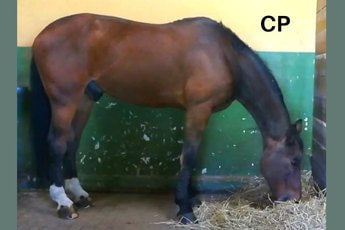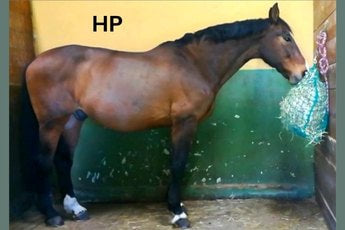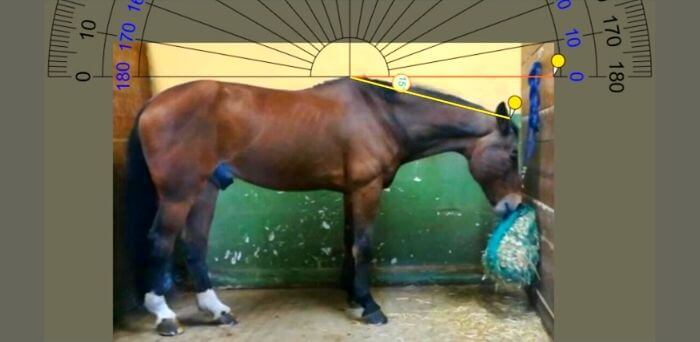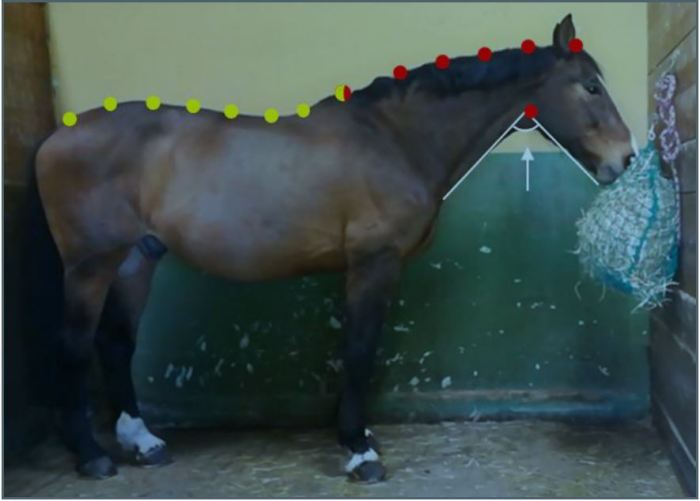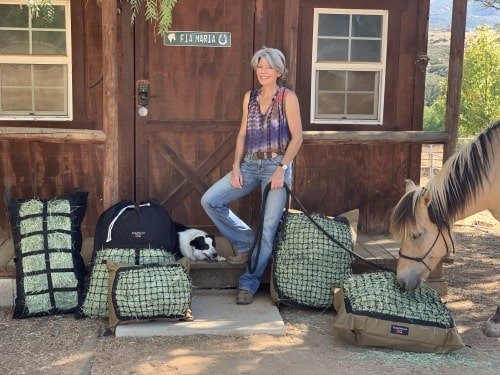Study - How Hay Feeder Height Affects Jaw, Neck & Back Posture in Horses
In 2021, Italian researchers conducted a study examining the shape variations of the back, neck, and mandibular (jaw) angle of horses based on specific feeding postures using geometric morphometrics - providing scientific evidence of the adverse physical effects of higher/unnatural eating positions compared to ground level. Read on for a condensed version of their findings. A link to the full study appears in the Reference section below.
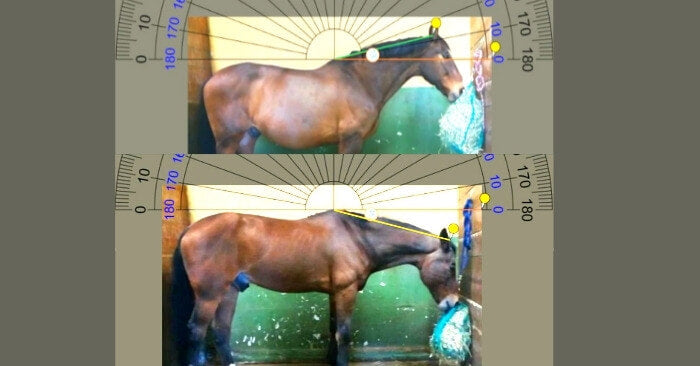
Condensed Highlight of Study
Using video recordings, three positions (CP, LP & HP) were studied to determine the shape variations of back and neck postures as well as the variations of the mandibular angle:
Photo: Raspa et al. https://www.mdpi.com/2076-2615/11/3/763/htm
Photo: Raspa et al. https://www.mdpi.com/2076-2615/11/3/763/htm
Photo: Raspa et al. https://www.mdpi.com/2076-2615/11/3/763/htm
Comparison of Low and High Hung Hay Nets
Shape Variation Points of Reference
Conclusions
When the horse maintained the LP hay net position with the neck 15 ± 3° below the withers, the back posture more closely resembled that exhibited during CP (ground level), considered as a natural feeding position. Instead, no similarity was recorded for both the neck posture and the mandibular angle.
The overall effect on the shape of back and neck postures and mandibular angle was more evident when the horse was forced with the neck 15 ± 3° above the wither height with high hay net position (HP).
Even though the LP hay net position promoted a better back posture, this was not sufficient to maintain a neck posture and a mandibular angle similar to that obtained when a horse was fed from from the ground (CP).
Since hay nets are useful to increase the feeding time consumption, it is necessary to investigate all the postures that a horse may achieve when feeding out of a hay net and identify the height which allows a more natural overall posture."
In Closing
"Even though the low hay net position promoted a better back posture, this was not sufficient to maintain a neck posture and a mandibular angle similar to that obtained when a horse was fed from CP [control position: the ground]."
Because hay nets and slow feed hay bags are useful tools to increase the duration of hay consumption, it is necessary to investigate all postures that a horse may achieve when eating from a slow feeder and identify the height which allows the most natural overall posture.
Disclaimer
This study was conducted with shod horses. Hanging nets too low presents a serious risk of the back of the shoe becoming ensnared in the netting if the horse paws at it or rolls. These risks are noted throughout our website and addressed in our blog post: Safety Tips for Choosing & Using Slow Feeders for Horses.Learn more about the physical, mental & emotional benefits of allowing your horse to eat from ground level in a natural grazing position.
Helpful Resources
- Safety Tips for Choosing & Using Slow Feeders for Horses
- Can Horses Eat More Hay Without Weight Gain? The Surprising Factors
- Are You a Prisoner of Feeding? Here's How I Broke Free
- How & Where to Test Your Horse's Hay & Interpret Results
- 9 Benefits of Slow Feeding Horses - Get Slow Feed Savvy
- Equine Gastric Acid - 12 Facts You May Not Know
- Equine Gut Health - The Need for Feed
- Why Horses Need Salt & Why Salt Blocks Are Not Enough
- A Safer Always Have Hay Source – Mature Grass Hay
- Sugar Content of Pasture & Hay: Q & A with Katy Watts, Founder of Safergrass.org
Raspa, F.; Roggero, A.; Palestrini, C.; Marten Canavesio, M.; Bergero, D.; Valle, E. (2021, March 10) Studying the Shape Variations of the Back, the Neck, and the Mandibular Angle of Horses Depending on Specific Feeding Postures Using Geometric Morphometrics. Animals 2021, 11, 763. https://doi.org/10.3390/ani11030763 (open access article). Retrieved from https://www.mdpi.com/2076-2615/11/3/763/htm
